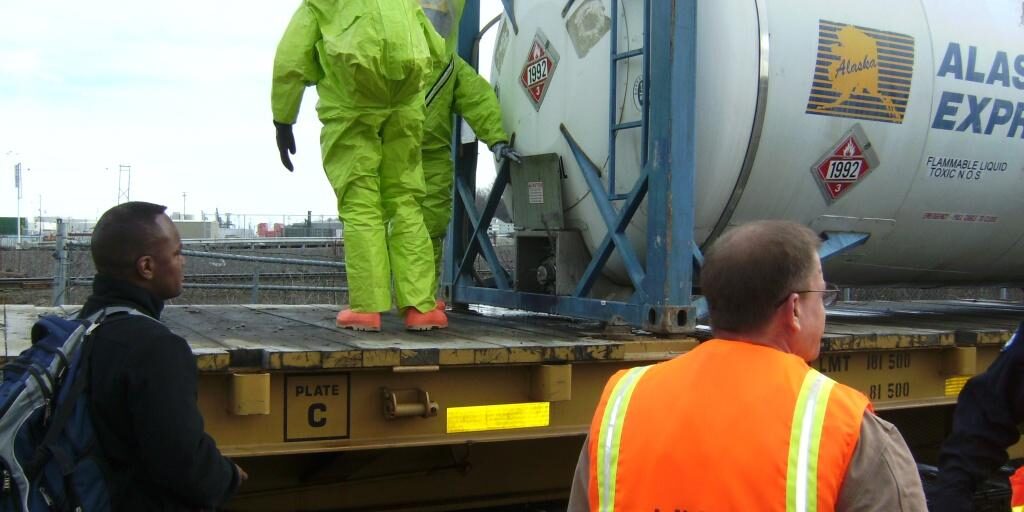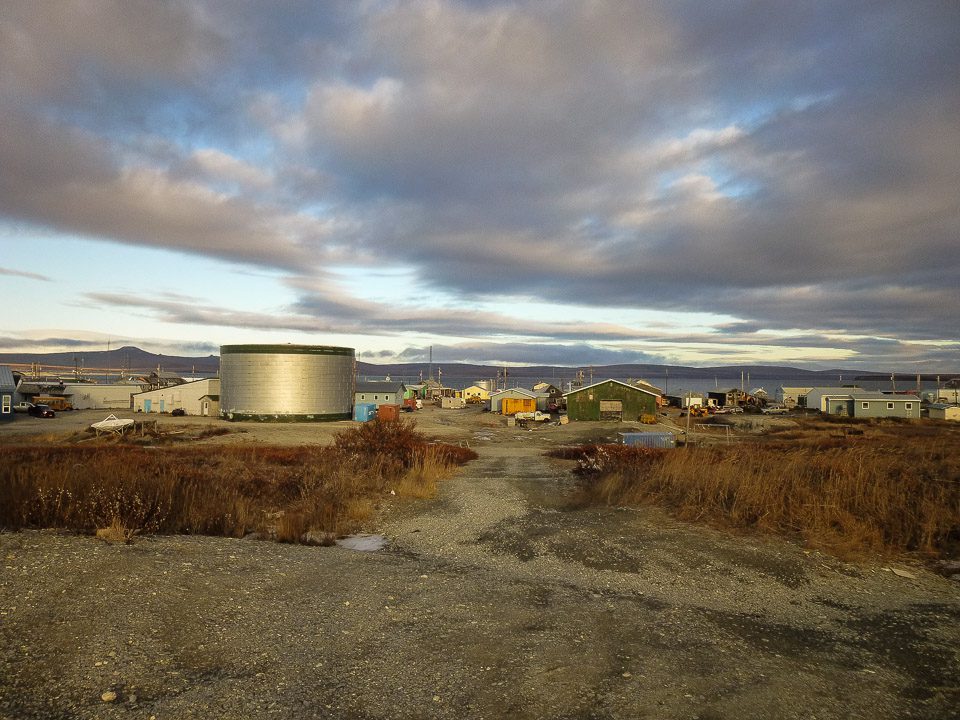What happens if a fuel ship spills in the Bering Strait? Who would respond, and how?
Those are the questions addressed during an oil spill response exercise this Wednesday.
“Our goals are to deploy equipment from Nome to Teller and put some deflection boom configurations in on the Port Clarence Side to simulate a fuel spill, and trying to keep the fuel out of Grantley Harbor,” explained Matt Melton, the General Manager for Alaska Chadux. The company contracts with fuel-shippers like Crowley Maritime and Delta Western, who retain their services in case of a spill. Chadux stores equipment in different coastal hubs like Nome and Kotzebue to provide quick response to spills. It’s one of five so-called OSRO’s in Alaska.
“An OSRO is an Oil Spill Removal Organization,” Melton said, “and it’s a designation that’s given to certain companies that meet certain requirements by the United States Coast Guard.”
It’s common for the companies that actually ship fuel to use OSRO’s, who then take on responsibility for coordinating spill response should anything go wrong. Those plans are overseen and approved by the state’s Department of Environmental Conservation who are helping facilitate Wednesday’s exercise in Port Clarence, which, as Melton explained, will be a first for both the agency and Chadux.
“It’s a new place for an exercise like this. Obviously the remoteness of Nome and Teller and Brevig brings some different challenges. And I think Alaska Department of Environmental Conservation, with the focus that’s going on in the Arctic recently, looked at this year as an opportunity to go out and test geographical response.”
The plan on Wednesday is to measure how long it takes to deploy equipment into a small section of the waters near Teller and Brevig Mision–starting with hauling hundreds of feet of booms by road all the way from Nome at 6:00am. DEC sees the exercise as a small-scale version of a larger practice run they’d like to try a year from now, to get a better sense of how close or far stakeholders in the far North actually are in case of an industrial accident near the Bering Strait.
Gay Sheffield works with marine mammals and is volunteering to observe wildlife during Wednesday’s exercise. She believes that no matter how the drill goes it’ll help establish the degree readiness in the region for an industrial spill.
“It’s a win-win: if the drill is a success then we’ll know we have that much capability to deflect, or remove, or collect any kind of pollution in the water. If it’s not a success then we’ll know that we need more, and we’ll be able to say that—we’ll be able to say this wasn’t successful and we need more equipment, or attention, or a better way to do it,” Sheffield said.
It was not clear from either DEC or Chadux how closely they’ve been coordinating with leadership in Teller and Brevig Mission. John Kotula with the agency said they’d be drawing on local knowledge to better assess areas at the site deemed important for historical and economic purposes. But with subsistence salmon season currently in full swing, fish moving near to the drill’s staging ground, and many families at camp, it’s unclear what degree of local participation DEC is anticipating or has arranged.
The spill response exercise comes amid a flurry of industrial projects proposed for the same areas depended upon by Teller and Brevig residents for subsistence. In addition to the deep draft port, many anticipate to be developed in Port Clarence, a potential graphite mine is being explored near the Imuruk Basin, and a gold dredging operator recently applied to bring a barge-dredge to Grantley Harbor.







